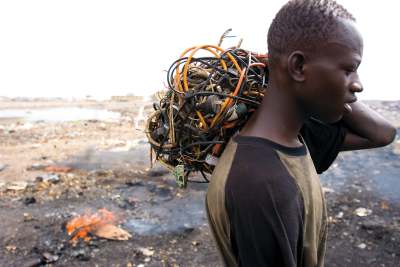The Bigger Picture: Ethical issues behind your TV screen
You'll notice that the score table in this guide is no longer displaying. This is because the guide is over 5 years old and the scores were out of date. We have a programme of reviewing guides to schedule updates and this one is under consideration.
The average Briton spends almost ten years of their life watching TV, and over 95% of households own a television set.
TVs have become more energy efficient with time, so watching them now burns through less electricity. But like all electronics, they require significant resources to manufacture and have a serious impact on the communities involved.
Toxic chemicals and TVs
Many of the elements and compounds used in electronic devices are known to be toxic both to human health and the natural environment.
These include polyvinyl chloride (PVC) and brominated flame retardants, used in plastic parts, and phthalates, which are often used as a softener for PVC. These can release harmful by-products, including some carcinogens, particularly during disposal when burning releases chemicals directly into the air.
Ethical Consumer rates electronics companies on their commitments to phasing out these chemicals. No company in this guide received our best rating for toxic chemicals:
Worst: Cello, LG, Hisense, Dixons Carphone (Logik), Hitachi, Sharp, Panasonic, Toshiba, Sainsbury (Bush)
Middle: Philips, Sony, Samsung
Tax avoidance by TV brands
The companies in this guide also did not do well in terms of likely use of tax avoidance strategies. In fact, all but one received our worst rating. Cello received a best.





